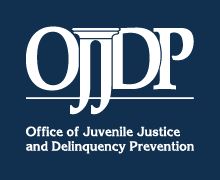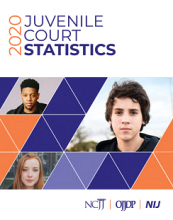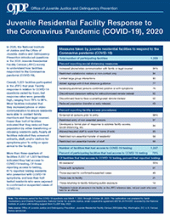Juvenile detention
Screening for PTSD Among Detained Adolescents: Implications of the Changes in the DSM-5.Trauma-Theory Research Practice and Policy
Improving Programming in Juvenile Detention: The Impact of Project Safe Neighborhoods Youth Outreach Forums
Vocally-Encoded Emotional Arousal as a Marker of Callous-Unemotional Traits in a Sample of Justice-Involved Adolescents
Nonfatal Firearm Injury and Firearm Mortality in High-risk Youths and Young Adults 25 Years After Detention
Are All Welcome? An Empirical Examination of Visitor Networks Among Incarcerated Youth
Expert versus Youth Raters on Measuring Social and Therapeutic Climate in Secure Juvenile Placement
Juvenile Court Statistics, 2020
Juvenile Residential Facility Response to the Coronavirus Pandemic (COVID-19), 2020
Assessing the Effectiveness of Interventions Designed to Reduce Racial/Ethnic Disparities in the Justice System: A Systematic Review and Meta-Analysis
NIJ-Funded Research on Firearms Violence in Urban Cities Advancing Scientific Evidence to Inform Practice
In this full thematic panel, renowned experts will present a series of papers summarizing the newest findings of NIJ-funded research projects on criminal offenses with firearms in urban areas. Researchers used various criminological and other theories, including routine activity theory, socio-ecological and socio-environmental perspectives, and advanced mixed-study methods, including surveys and spatio-temporal designs, to produce scientific evidence to inform practice.
See the YouTube Terms of Service and Google Privacy Policy
Prevalence, Comorbidity, and Continuity of Psychiatric Disorders in a 15-Year Longitudinal Study of Youths Involved in the Juvenile Justice System
Dual System Youth: At the Intersection of Child Maltreatment and Delinquency
Across the country, child welfare and juvenile justice systems now recognize that youth involved in both systems (i.e., dual system youth) are a vulnerable population who often go unrecognized because of challenges in information-sharing and cross system collaboration. In light of these challenges, national incidence rates of dual system youth are not known.
See the YouTube Terms of Service and Google Privacy Policy
Examination of the Relationships Among Drug Use, Emotional/Psychological Problems, and Crime Among Youths Entering a Juvenile Detention Center
Hair Assays and Urinalysis for Drugs of Abuse Among Juvenile Offenders: A Comparison of Two Cities Based Upon the Drug Use Forecasting Program Final Report
Juvenile Court Statistics, 2018
Violent Repeat Victimization: Prospects and Challenges for Research and Practice
Research tells us that a relatively small fraction of individuals experience a large proportion of violent victimizations. Thus, focusing on reducing repeat victimization might have a large impact on total rates of violence. However, research also tells us that most violent crime victims do not experience more than one incident during a six-month or one-year time period. As a result, special policies to prevent repeat violence may not be cost-effective for most victims.
See the YouTube Terms of Service and Google Privacy Policy
Benefit-Cost Analysis for Crime Policy
How do we decide how to allocate criminal justice resources in a way that minimizes the social harms from both crime and policy efforts to control crime? How, for that matter, do we decide how much to spend on the criminal justice system and crime control generally, versus other pressing needs? These questions are at the heart of benefit-cost analysis.
See the YouTube Terms of Service and Google Privacy Policy
Familial DNA Searching: Issues and Answers
Familial DNA searching is the practice of creating new investigative leads in cases where DNA evidence found at the scene of a crime strongly resembles that of an existing DNA profile but is not an exact match. Panelists will explain how the technology works, provide examples of successful convictions obtained through familial searches, and discuss the various misconceptions and concerns regarding this practice.





